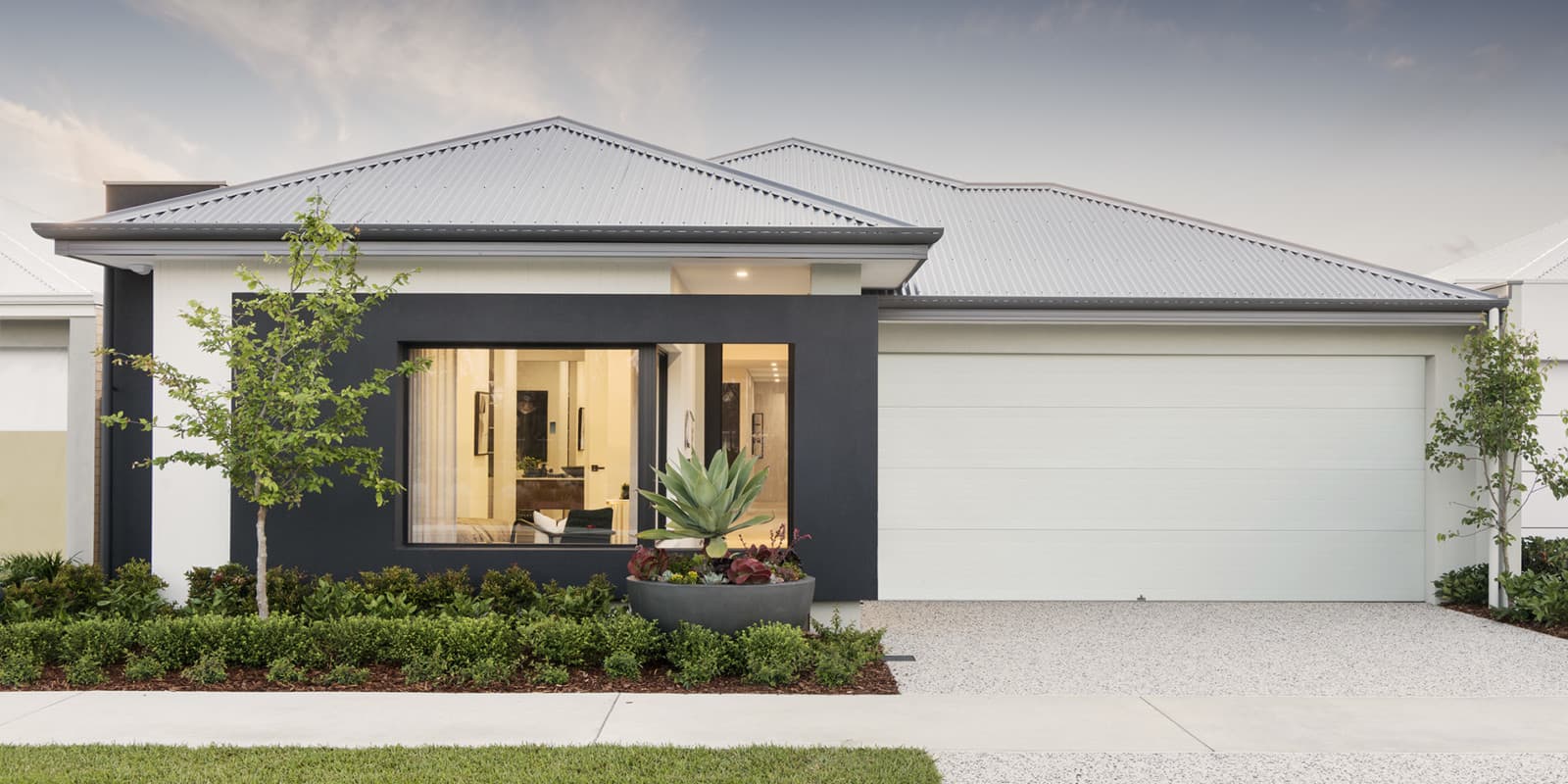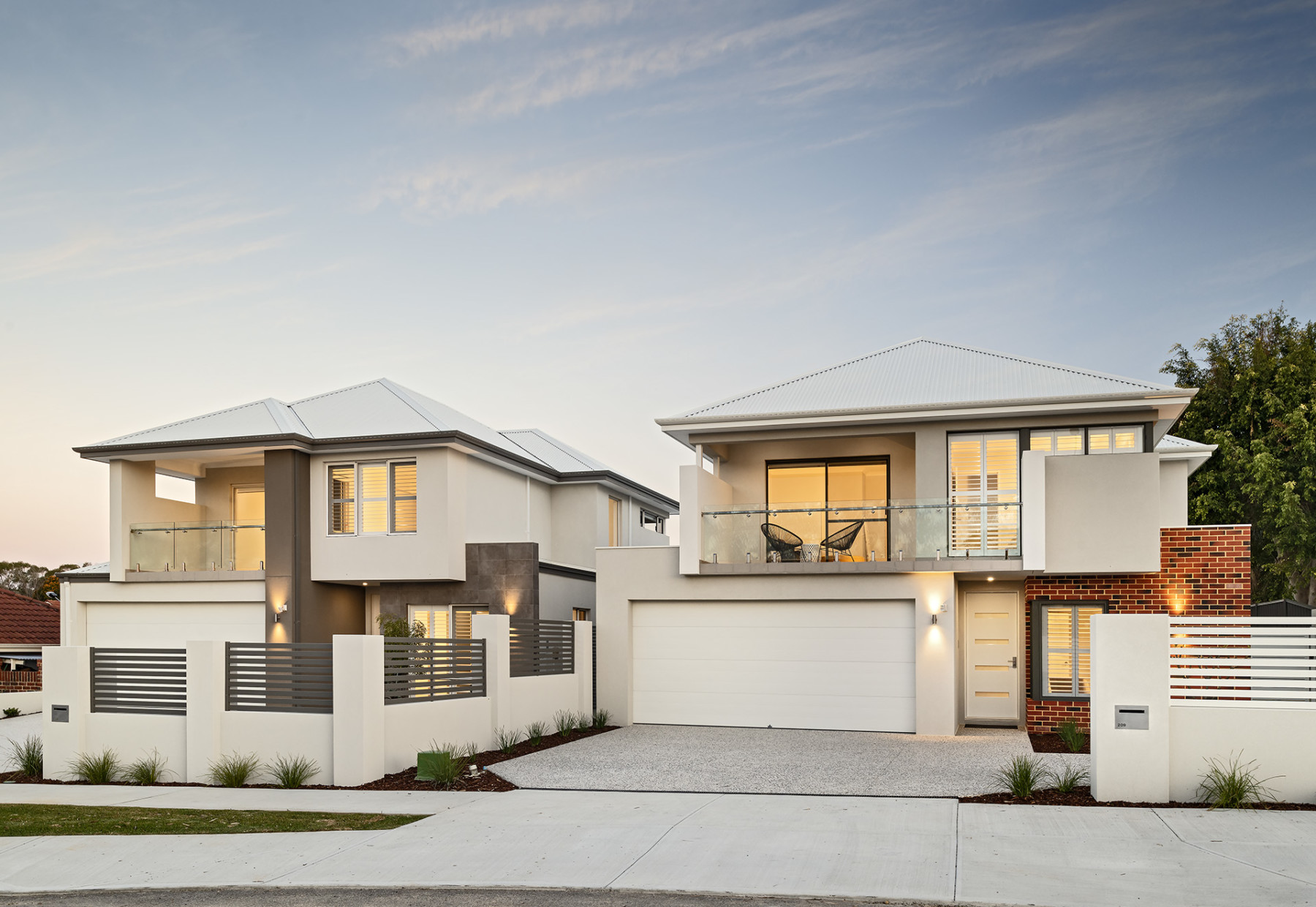So many reasons to love your narrow block
Building your house on a narrow lot now has many advantages
When narrow blocks first edged their way into the spotlight they were greeted with a certain amount of trepidation.
Could you really get a house on a site that skinny? What about outdoor space? And all the rooms you’d need?
Today, many homebuyers are actively hunting down narrow lots that bring them closer to the city or into their favourite beachside suburb. Developers are capitalising on the trend, often knocking down an old house on a big block and subdividing the land into two or more highly desirable narrow lots.
Once upon a time, dividing up an established block would typically create two battle-axe lots, with one house behind the other. Now, it’s more likely the block will be divided down the middle from front to back, creating two narrow blocks side-by-side. The advantage is that each new narrow-lot home can have its own prized street frontage. What was once a 20 or 25m-wide block is now two blocks of 10m or 12.5m wide, each with its own access.
And with Dale Alcock Homes and Developments by Dale Alcock, whether you’re building one or two narrow lot homes – we can help!

Design innovation on narrow land
Thankfully residential design has well and truly kept pace with the subdivision trends and buyers have a wealth of innovative narrow-lot designs to choose from.
The Dale Alcock narrow-lot collection includes beautifully modern and spacious, long skinny house designs for both 10m-wide blocks and 12.5m-wide blocks. Each narrow-lot design is light, bright and spacious, with all the bedroom and living space homebuyers look for, and all the features that make the most of a slender homesite.
Take the Airlie, for example. One of our most popular house plans for narrow land, the Airlie is a three-bedroom, two-bathroom design with a home office, large open-plan kitchen, living and dining area, alfresco and double garage.

Location, location, location
As well as offering space and lifestyle, a narrow-lot home can also be an affordable option for many homebuyers, getting them into a sought-after location without the hefty price tag of the bigger blocks.
The push for urban infill – building more homes in established areas – is certainly opening up affordable opportunities to build close to the city, with shorter commutes, and lots of cafes, shops and restaurants on the doorstep, as well as public transport and good schools.
A narrow-lot home often costs less to run too, with less maintenance, and the potential for smaller electricity and water bills than the big old house with lots of lawn to look after and rooms that rarely get used.
If you’re thinking about building a house on a narrow lot, here’s a quick list of things to help you get started:
Block features: Sloping blocks generally mean higher site costs, so the flatter the better. Also be aware that the neighbours won’t be expected to contribute to the cost of any new fencing. If it’s a narrow block with a view in several directions, double-check that local planning requirements won’t have an impact on your plans to enjoy it.
Sense of volume: Features such as high ceilings, voids, skylights and floor-to-ceiling windows bring a heightened sense of volume to a design for a narrow-lot, making it feel much bigger and airier than its slender proportions would suggest. Lots of natural light and a seamless indoor-outdoor connection are also must-haves.
Maximised space: The aim is to eliminate ‘dead’ or wasted space as much as possible. Storage in the form of bookcases and built-in cabinetry can turn even the trickiest of spaces into something functional and stylish.
Added costs: Note that features such as boundary walls, internal courtyards and separate storerooms can contribute to a higher cost-per-square-metre for narrow-lot homes when compared to the cost of building on a standard block in a new estate.
Easements: There’s no need to be put off if you discover there’s a Water Corporation easement on the block you’re looking at. A fact of life when building in urban areas, an easement is simply a portion of land that the Water Corporation has legal permission to access for maintenance or repair. Easements can work in your favour though. Not only might the seller have priced the land more competitively because of it, but it’s often possible to build up to, or even over, an easement.
Parking: Narrow blocks with access from a rear laneway are often a popular option because the garage can be positioned at the back of the house, freeing up more of the front elevation for standout street appeal.
Street appeal: Even if the garage must go at the front, today’s narrow-lot designs deliver stunning facades with a striking mix of materials, tones and layers to make the home stand out from the crowd.
Looking for more narrow-lot inspiration? Explore our collection of 10m and 12.5m designs or check out the case studies to discover what’s possible on a narrow lot.
Make your building or developing dreams a reality.
Whatever your budget, whatever your plans, our team are here to help make your building or developing dreams a reality.
Call 7 days on 9242 9200 or book a free consultation.
Find out more
